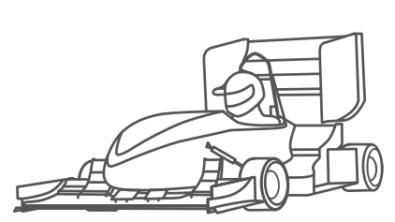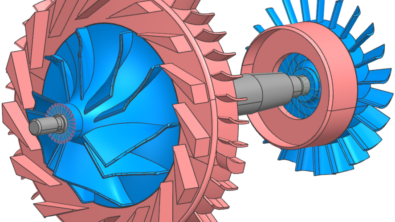An Introduction to Aeroelasticity

What is Aeroelasticity?
The NX NASTRAN Aeroelasticity software solution enables you to analyze models in which structures are immersed in fluid flows which, as a result, affect the stiffness and behavior of the structure itself.
Aeroelasticity, in general, considers inertial, elastic, and aerodynamic forces acting on a structure:

The most basic example of this fluid-structure interaction is the static aeroelastic instability known as divergence. Consider a wing immersed in a flow:

At some angle of attack, this wing will generate a lift force at the quarter chord. Often, this lift isn’t applied at the shear center however, which means that in addition to the lift acting on the wing’s structure, a torsional moment is also applied. This leads to a twisting of the wing which then leads to a greater lift produced by the wing:

This feedback loop of adding increasing lift and wing twist can continue until some equilibrium point is reached:

This interaction actually manifests as a reduced stiffness for the wing, and so it turns out that there is a free-stream velocity so high that the wing reaches no equilibrium point where the wings stiffness is reduced to 0. This phenomenon is known as divergence, and can cause catastrophic failure in any aircraft.
Most aeroelastic behavior is not so conceptually simple, however this example illustrates the fundamental concept of the coupling physics well.
When would I need to consider aeroelasticity?
In general, you need to consider aeroelastic effects when you are analyzing a flexible structure that operates within a fluid. Examples of this are aircraft (especially HALE and composite), missiles, and bridges.
On Tuesday, September 13th SDA is hosting a webinar that will cover three of the many topics that can be addressed using the Aeroelasticity module.
1. Static Aeroelastic Analysis
The first topic to be covered is how to set up and run a simple static, aeroelastic solution. This will include starting with a wing FEM, setting up the aerodynamic model, and setting up and running a static aeroelastic analysis.
2. Aeroelastic Tailoring
The second topic to be covered is aeroelastic tailoring. In this example, we will explore how adding bending-twisting coupling in a composite wing can increase or decrease the lift generated by our wing.
3. Flutter Analysis
The third and final topic to be covered is how to set up and run a flutter analysis in order to predict flutter and divergence. In addition, we will cover some of the significance of the results produced by the analysis.
We would love for you to join us for our aeroelasticity webinar.



